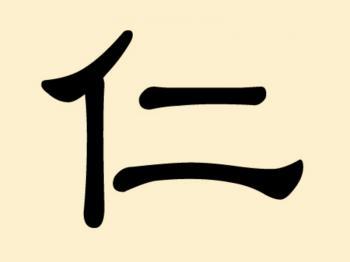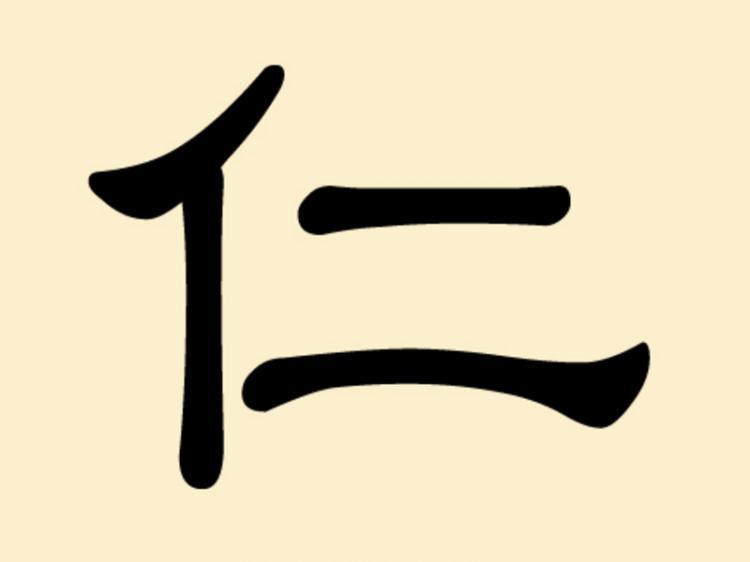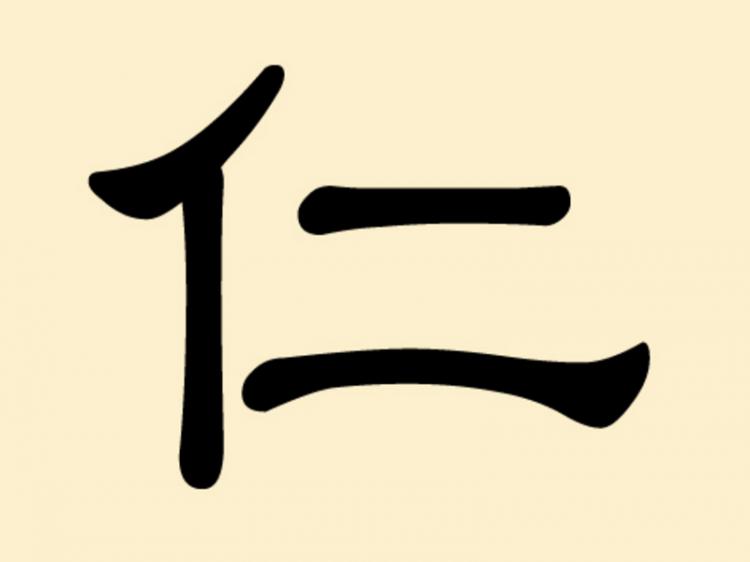仁 (ren) represents the Chinese character for goodness of heart, compassion and wanting the best for others. It consists of two components - the left side 亻 symbolizes man, and is a radical appearing in many Chinese characters. In contrast, the right side 二 (er) is not just a component of 仁, but is also a character in its own right. The character symbolizes on the one hand dignity and ethics, and on the other hand earthly things. In its entirety, the symbol relates to the idea of a man, along with his earthly connections.
仁 represents the basis of Confucian teachings which permeated classical Chinese culture. These teachings exhort people to conduct themselves virtuously and to practice habits such as compassion, kindness of heart, propriety, upright conduct, wisdom, faith and learning.
People in premodern times saw compassion on par with morality, and saw compassion and wanting the best for others as typical attributes of noble men. Not merely should the citizenry raise their standards based on these attributes, but the teachings also enable politics to be carried out in the most humane manner.
Confucian philosophy teaches that only a morally upright, and at the same time compassionate, human being deserves to and is capable of governing.







